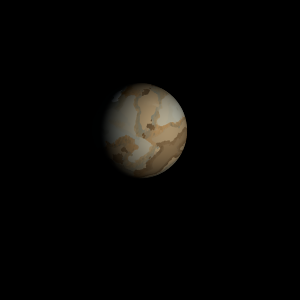|
|
Space Astro
|
Info for exoplanet "Detezav"
| Scientific (actual) data |
|---|
| Name | K2-352 b |
| Planet status | Confirmed |
| Radius | 0.17 |
| Orbital period | 8.23 |
| Discovered | 2018 |
| Updated | 2022-11-09 |
| Publication | Published in a refereed paper |
| Detection type | Primary Transit |
| Alternate names | EPIC 251319382 b |
| Star name | K2-352 |
| Right ascension | 140.45° |
| Declination | 18.47° |
| Mag v | 11 |
| Wikipedia article | K2-352 b |
Back
| |
| Fictional info (?) |
|---|
| Suggested name | Detezav |
| Planet type | Cold planet |
| Its orbital period around K2-352 of 8.2 earth days is the longest of all the planets in its solar system.
A prominent result is the "great yellow spot", a giant storm that is known to have existed for centuries since it was first detected by scanner. |
| Atmosphere | 2H2O | 99% |
| Methane | 0.055% |
| Oxygen | 0% |
| Atmospheric pressure | 0.006 bar |
 |
| No known satellites |
| Google search for Detezav |
|
Website by Joachim Michaelis
|
|
|
|